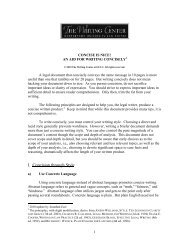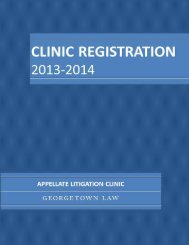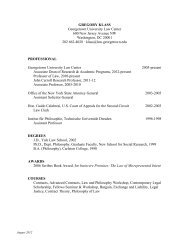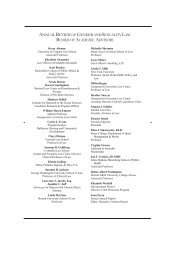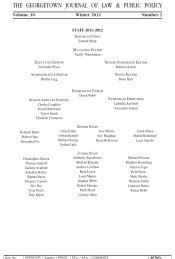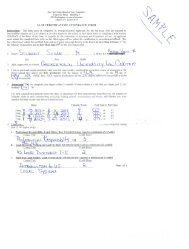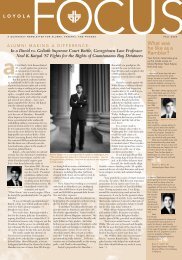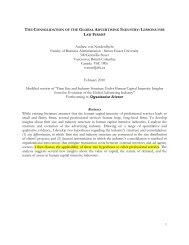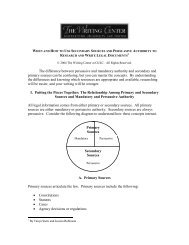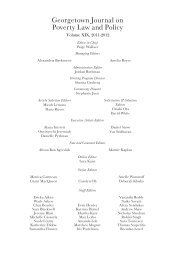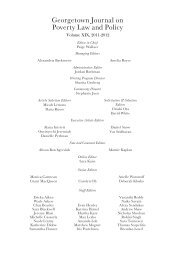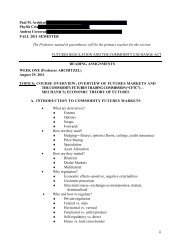Date: April 12, 2013 Topic: The Shrinking ... - Georgetown Law
Date: April 12, 2013 Topic: The Shrinking ... - Georgetown Law
Date: April 12, 2013 Topic: The Shrinking ... - Georgetown Law
You also want an ePaper? Increase the reach of your titles
YUMPU automatically turns print PDFs into web optimized ePapers that Google loves.
area. As it stands, our measure suggests that both corporations have the same level of supplier<br />
concentration. However, firm B clearly has a less concentrated portfolio of suppliers given<br />
that it has 4 different suppliers for the same practice area. To account for this, we counted the<br />
number of law firms undertaking work for the focal firm in each practice area (this<br />
information is available from ALM) and then averaged these. A high number of this measure<br />
suggests that the focal firm has multiple suppliers in the same practice area, which is<br />
indicative of low concentration in the provision of legal services. Consistent with our results,<br />
the coefficient for this variable remains positive and significant at the 6% level.<br />
DISCUSSION AND CONCLUSION<br />
A substantial body of research has examined the conditions under which plural<br />
sourcing is likely to occur. Moving beyond the question of when it occurs, the issue of how<br />
firms choose the balance between making and buying in plural sourcing has remained underexplored.<br />
This study fills that gap. In doing so we identify two mechanisms that dictate the<br />
make-buy balance in plural sourcing, namely resource co-specialization and supplier<br />
concentration. Our framework enables us to predict the make-and-buy mix in the context of<br />
legal services provision.<br />
<strong>The</strong> empirical findings support the view that when making and buying, firms exploit<br />
resource co-specialization and supplier selection to tip the balance in favor of in-house<br />
production and delivery. Dynamic panel regression analysis uncovered broad-sample<br />
statistical support for five of the six hypotheses derived from our plural sourcing framework.<br />
We noted statistically significant and practically substantial increases in the reliance on inhouse<br />
lawyers with increases in the number of countries where the firm had operations, with<br />
increasing R&D and advertising expenses as a percentage of sales, when the GC is part of the<br />
firm’s TMT, and as the number of law firms providing work for the firm increases. <strong>The</strong>se<br />
trends proved robust to alternative estimation strategies that took full advantage of the panel<br />
26



